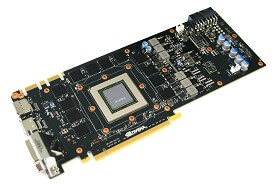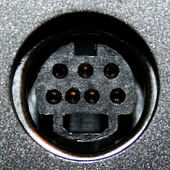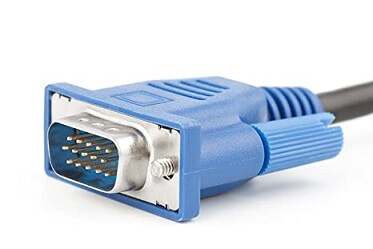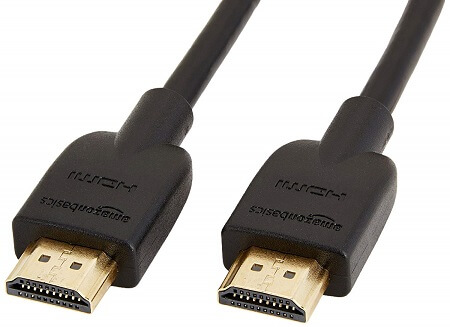What is a Video Card?
A video card is a PC component that connects to a computer motherboard, also known as a video controller, display adapter, video board, graphics card, or video adapter. It is an expansion card, controls and calculates an image’s appearance on the screen and used to improve the picture quality to show on display. Even you cannot see this page without a video card. It accelerates the video throughput as it is an intermediate device. The below picture is an instance of the video card.

More clearly, inside the computer, it is a piece of hardware that process the graphics portion of the processing load, and normally CPU handles most of the task. Due to extra processing power and video ram, gamers use the video card instead of integrated graphics. Almost, it is able to run all programs more efficiently as in modern times most of the programs are graphically oriented.
The video card has the ability to speed up both 2D and 3D graphics rendering. Like web browsers and photo editors’ programs may benefit from 2D acceleration, and video games and CAD design programs will likely advantage from the card’s 3D acceleration.
The libraries, like OpenGL and DirectX, are supported by most video cards. For manipulating graphics, these libraries have commands that programmers can use in their code. Some commands from among these may be used for casting light, morphing polygons, moving or rotating an object, and creating shadows. To create graphically-oriented programs, the OpenGL or DirectX standards provide an easier way for developers. For the computer, it also makes it compulsory to involve a supported video card in terms of running programs. The components contained by the graphics card are given below:
- GPU
- DVI
- Video-BIOS
- Video-memory
Video cards were not very sophisticated at the early times of computer graphics. They were only able to send output data that come from the processor to the display. Due to the output in text format, this worked well. As a result, early operating systems did not have color and complex graphics.
In modern times, video cards are similar to co-processors. It means that, instead of forwarding a simple signal onto the display, video cards add some processing power. Furthermore, video cards have the capability of checking the quality of the output.
Important Video Card Facts
Only a limited range of video card formats are supported by each motherboard. Therefore, before making a purchase, always check with your motherboard manufacturer.
Many modern computers have on-board video – GPUs integrated directly onto the motherboard and do not include video expansion cards. It makes the computer a less powerful graphics system, but also less expensive. This option is appropriate for users who have no interest in the latest gams or additional graphics tasks. Most of the motherboards that come with on-board video; provide the ability for BIOS to disable the chip through which a video card can be installed to an expansion slot.
How to check what Video Card I Have?
In Windows, users can use Device Manager to check video cards; it is the easiest way to see what video card users have. Under the Display adapters section, the list of video card can be found, Also, the tool like Speccy can be used to see what graphics card you have, which is a free system information tool. It helps to identify the bus interface, amount of memory, device ID, temperature, manufacturer, BIOS version, model, and some other video card information.
Another way to see video card on the system is a computer case, which need to open the computer case then you can see what video card is installed on the system. IF you need to replace the video card, opening the computer case is a required option. But if you only want to see the video card information, it will be better to use the software mentioned above.
Components of Video card or Graphics card
Here are some essential components of a video card:
GPU (Graphics Processing Unit)
Every graphics card has a GPU, which is the heart of the Graphics card. It is the primary component of the graphics card that handles the mathematical computations needed to create visuals. Usually, it is placed underneath a fan or heatsink because when performing calculations, the processor can get extremely hot. Some of the GPU processors provide advanced functionalities, such as offer 3D graphics that look smoother through full-scene anti-aliasing.
Memory
Memory is needed for storing the complete information that can be accessed quickly when the time is right. Although GPU is figuring out how to display images, memory is the place that stores all the complex textures, which is needed until it’s ready to be used. In this situation, the RAM is a memory that comes in handy. GPU fetches the textures from memory and forwards them to RAM after processing them, and then RAMDAC accepts it from the RAM and then forwards them to your monitor or LCD screen for display. RAMDAC converts the image to the analog signal as it is a Random-Access Memory Digital to Analog Converter and then sends them to your monitor or LCD screen with the help of a display cable. As compared to memory use in Desktop or Laptop, graphics card Memory or RAM is much faster.
Internal Interface
The primary function of internal interface is to connect a graphics card to the motherboard. In the early time, AGP (Accelerated Graphics Port) interface was used by graphics cards to connect to the motherboard, but now graphics cards use PCI Express 2.0 x16 interface to connect to the motherboard, which is much faster and efficient as compared to AGP. Also, if the PCI Express x16 slot is contained by your motherboard, you cannot use the card.
DVI / HDMI / VGA Ports
The external interface of the graphics card is formed by the DVI, HDMI, or VGA Ports. With the help of relevant cable, they connect Monitor or LCD Screen to Graphics Card. Both types of interfaces, DVI and HDMI (High-Definition Multimedia Interface) are included in the high-end graphics cards, while low-end ones contain only VGA and DVI (Digital Video Interface) ports. In addition to all these major components, resistors, capacitors, diodes, and more are also some other components are presented on a graphics card.
Different Types of Graphic Cards
If you add a separate video card to your computer, it will enhance the speed of the video and video games. But there are many types of graphics cards available on the market; you should know which kind of card is better for your computer.
On-Board
With an expansion slot, the on-board graphics card is included on most budget-based PCs in lieu of separate graphics cards. Usually, for decoding high-quality video and playing graphics-intensive games, the on-board card is not more powerful. On-board graphics cannot remove physically. Therefore, if you need to replace on-board graphics with an add-on graphics card, you will have to disable the on-board graphics in the computer’s BIOS to install an add-on graphics card.
PCI Express
The PCI Express is a standard in video cards as of 2009. Only two manufacturers, NVIDIA and ATI produce PCI Express graphics cards. With the latest being PCI Express 3.0, it comprises three architectures.
AGP
In the early to mid-2000s, AGP was the standard graphics card type, which stands for Accelerated Graphics Port. In modern times, these cards have been replaced by PCI Express and are not widely available. Also, AGP ports are not included by most hardware manufacturers in their systems. In 2008, a Radeon HD 4000 series was introduced by ATI; however, a new card has not been released till now.
External Graphics Cards
Since manufacturers of laptop computers have stopped including space for an add-on graphics card on the laptops, some manufacturers started to produce external graphics cards for improving graphics capabilities.
Legacy Graphics Cards
Graphics cards like PCI, VESA local bus, and ISA graphics cards are not widely used in the modern times. These graphics cards are not compatible with the current versions of Windows. Therefore, the aforementioned cards are not more popular.
Graphics Card History and Standards
Often, a printer port was included in the graphics card since the printer would print information on a lower resolution “green” screen.
In 1987, a new graphics standard came into being when the Video Graphics Array (VGA) was introduced by IBM. At resolutions up to 720×400, a VGA display could have the ability to support to 256 colors. Perhaps, VGA was analog that is the difference between the preceding formats and the VGA, while displays had been digital up. Although it may be an older option if you take an action from digital to analog, as compared to the strict on/off nature of digital, it offers the ability to vary the signal for possible combination. Now, all-digital display solutions are offered by manufacturers of graphics-card that have the same features that analog adapters have.
Over time, SVGA cards were designed on the basis of VGA, but the manufacturer of each card increased color depth and added resolutions in different ways. Lastly, SVGA provided 1280×1024 resolution and up to 16.8 million colors.
Graphics cards follow industry standards that make users capable of selecting cards for their PC among a variety of graphics cards. Comparing the basic VGA specification, you can buy any card that can offer you higher colors and resolution.
GeForce 6 Series 6600 and 6800 were released by Nvidia in 2004. The 6800 was the original card that was popular among overclockers. Overclockers are the programs that use this program is known as Riva Tuner. SLI supports multi-video cards and PureVideo technology, which provides better video quality. GTX 8800 was introduced by GeForce in 2006. Radeon HD 5970 was released by AMD and also took over ATI in 2009.
What does a Video Card Do?
There are more than a million individual pixels are included on the average computer monitor, which has the ability to display a particular color to create complex pictures. However, between the CPU (central processing unit) and the screen, computers need a video card to serve as a middleman.
CPU sends a request to the video card when it needs to be something displayed. Then, the video card figures out exactly how to visualize the instructions. The pixels function as the video card’s canvas in this analogy. With a cable, such as VGA, S-Video, or DVI, it sends information to the monitor to make visuals display on the screen.
The video card must first start with a basic wireframe when it comes to translating binary data into 3D visuals. Then, include lighting effects, textures, and complex colors. This process needs to be repeated about 60 times per second to get optimal performance, or the visuals will start to look sluggish.
Video card ports
There are various types of video ports used with video cards, which are as follows:
- DVI
- S-Video
- VGA
- HDMI
DVI: Digital Video Interface (DVI) is a video display interface developed for the PC industry to transmit digital video content to display devices. It has the ability to transmit video content at resolutions as high as 2560 x 1600. From the computer to the monitor, DVI virtually eliminates signal loss and keeps data in digital form. Some TVs also use a DVI connection, as DVI cables can transmit audio signals. Therefore, HDMI can be more common as it can transmit both audio/video signals.

S-Video: S-video is an analog video connection standard, which stands for Super Video. It is a video transmission format that transmits electrical signals over wires to represent the original video. It is a kind of connection found on video devices, which uses a round connector interface and cable. It is also used for connecting VCRs, TVs, video cameras, computers as well as DVD players.

VGA: VGA is a popular display standard, which stands for Video Graphics Adapter or Array. It is developed by IBM and introduced in 1987. It is a connection for devices like monitors and projectors that offers 640 x 480 resolution color display screens. In this, 256 colors are shown if the resolution is lowered to 320 x 200. VGA cable is only capable of lower quality display and lower resolutions on screens as it uses analog signals. The below image is an example of a VGA cable, port, or connector.

HDMI: HDMI is an interface or connector, which is mainly used in devices like DVD player, Blu-ray player, Projector, and HDTV. It stands for High-Definition Multimedia Interface that is widely used for audio-visual equipment for transmitting high-quality and high-bandwidth streams of audio and video between devices.

